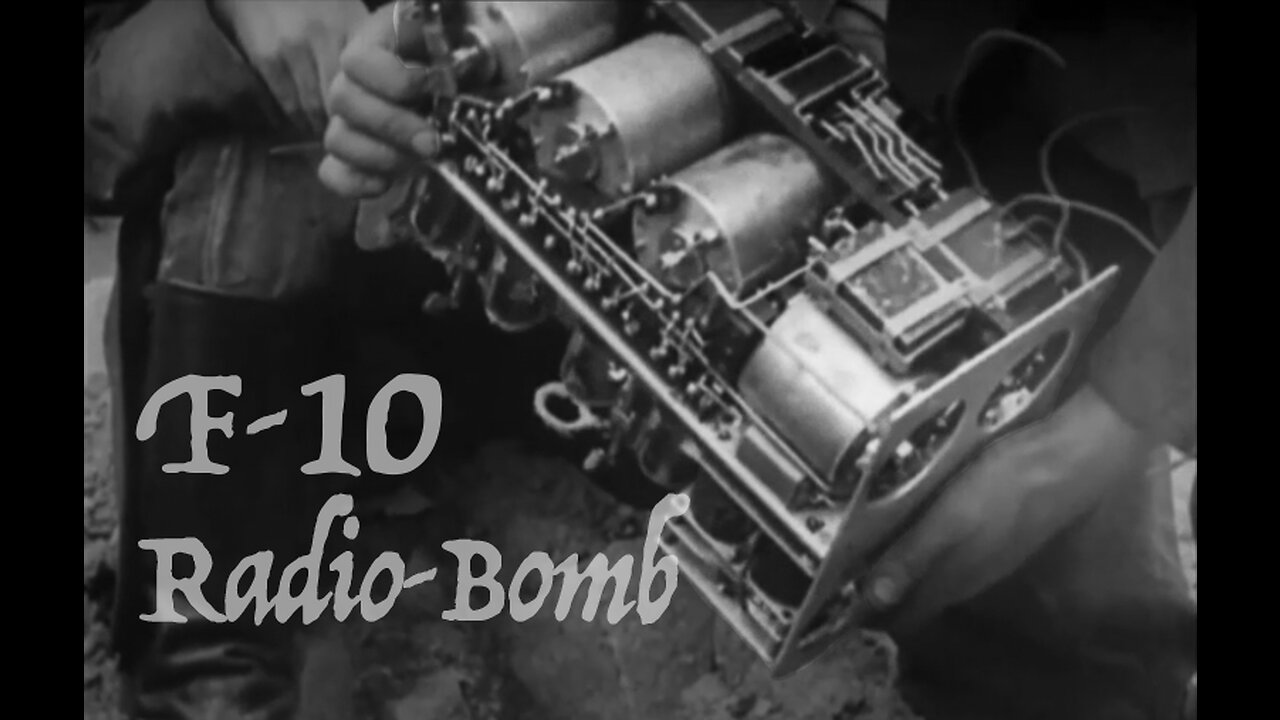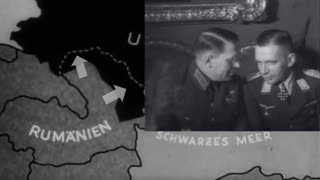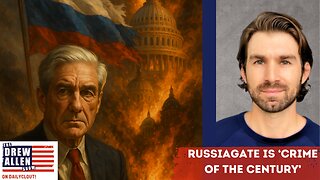Premium Only Content

Catastrophic damage caused by RADIO-BOMBS in occupied KIEV, Sept 24-28 of 1941 with UNSEEN FOOTAGE
SUPPORT THE CHANNEL and get access to exclusive film footage
www.Patreon.com/Military1945
Episode 184
This raw footage is part of a sensational collection from a German army film crew that was produced in September of 1941 after the Battle for Kiev. The material, being processed for use in Deutsche Wochenschau newsreels, had at this stage in the production cycle not yet received the recorded voiceover and more importantly had not yet been censored. That first scenes, for example, would never be shown to the general public and you can probably imagine why.
Using footage from this unique collection we’ll get an uncensored look at occupied Kiev and its population. We’ll then witness the staggering moment that soviet radio bombs were triggered which caused destruction on an enormous scale in an otherwise relatively undamaged city. It was in direct response to these attacks that the German authorities organized the 3-day massacre in the ravines of Babi Yar. At the end of this video we’ll see part of the newsreel that contains some of this raw footage so stick around, it’s worth it.
The city of Kiev was occupied by German forces on September 19th 1941. Contrary to the supplement to directive 34 in which Hitler ordered the city to be raised to the ground, since there had been no fighting within the city limits, it had been spared.
To some this might have seemed an indication that the war against the Soviet Union might progress in a less brutal fashion. If the civil population was willing to trade the autocratic rule of the Soviets to that of the new German occupiers then a relatively peaceful transition might be possible. Either way those in the German High Command had no intention of creating an independent Ukrainian state.
Here we see the German authorities providing papers to Ukrainian families which released the Soviet soldiers from the army and gave them the supposed right to return to their former agricultural activities.
This soldier standing next to his family is removing his Porlyanki, the traditional Russian soldiers’ foot wraps which had been in use since the 17th century. He happily trades in his Soviet uniform for civilian clothing.
This scene filmed in Kiev probably around September 22, shows German produced newspapers being passed out to the civilian population. Although filmed clearly for its propaganda value, there seems to be authentic interest in learning about the progression of the war from a non-Soviet source.
These urban scenes portray an uncanny normality. To what extent had the population acclimated to the new normal?
On September 24th the first of the soviet F-10 radio-bombs exploded in central Kiev with more attacks following up until the 28th. It’s believed that these were detonated by stay behind Soviet engineer units that sent out the activation signal on the designated radio frequency. The Germans tended to occupy large office buildings recently vacated by the Soviets knowing that they were to a large extent in better condition, offered space and sometimes even had communications lines that were left intact. Using this knowledge boobytrapped locations offered the opportunity to kill high value targets much as a sniper does on the battlefield.
The Soviets would even sometimes leave behind poorly camouflaged more simplistic booby traps in the area which, once deactivated, gave the occupier a false sense of security. An F-10 that was detonated on September 24th managed to hit the Rear Headquarters of the Wehrmacht Army Group South killing many officers including the artillery commander of the 29th Army Corps.
Appropriately, in the Lenin Museum, stashes of such F-10 radio-bomb detonators and thousands of kilos of explosives was found. Within a few days the Germans had developed counter measures which included using an electronic listening device which could localize the radio-bombs mechanical clock component, broadcasting a blocking radio wave at a discovered F-10 frequency or simply digging to find the radio antennae. But in Kiev, with the combination of the explosions and the resulting fires, the damage had already been done. In response the occupiers organized the largest reprisal massacre to date in the ravines of nearby Babi Yar. The downward spiral of increasing violence was accelerating.
-
 9:16
9:16
Military1945
4 months agoRomanian 4th Army Odessa - Ion Antonescu - Bessarabia and Northern Bukovina - Molotov-Ribbentrop
1941 -
 LIVE
LIVE
JuicyJohns
5 hours ago $2.40 earned🟢#1 REBIRTH PLAYER 10.2+ KD🟢$500 GIVEAWAY SATURDAY!
181 watching -
 15:32
15:32
Scammer Payback
4 hours agoTormenting the Scammer Who Did This
7277 -
 17:28
17:28
IsaacButterfield
9 hours ago $0.13 earnedThe Government Just Banned Free Speech in the UK
8652 -
 2:01:46
2:01:46
Tim Pool
18 hours agoIs Trump Still Winning? | The Culture War LIVE Debate
151K148 -
 5:22
5:22
Michael Heaver
13 hours agoBritain's Enraged Voters Reject EXTREME Agenda
1.37K -
 LIVE
LIVE
Rebel News
1 hour agoNo trade deal for Carney, Christian cancelled in BC Bible Belt, Liberal bail reform | Rebel Roundup
393 watching -
 LIVE
LIVE
The Drew Allen Show on DailyClout
1 hour ago"Russiagate Is ‘Crime of the Century’"
115 watching -
 1:20:41
1:20:41
Steven Crowder
4 hours agoBill Burr Flames Out on Conservatives, Whites, and... Ben Shapiro
191K117 -
 56:58
56:58
The Rubin Report
3 hours agoHow to Protect Yourself from Toxic Beliefs | Eckhart Tolle
41.3K25